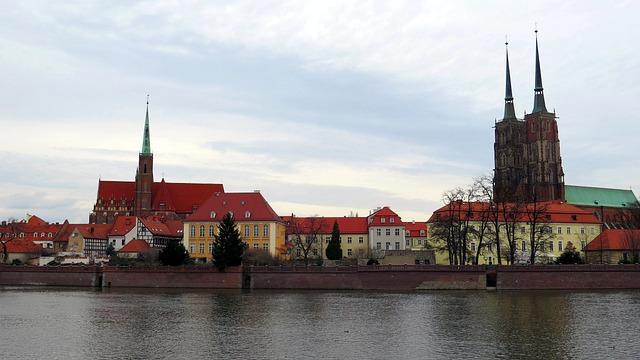In a small village, nestled between snow-capped mountains, a wise old priest gathered the townsfolk on a chilly evening. He spoke of the stars that twinkled brightly on the night Jesus was born, illuminating the humble stable in Bethlehem. “December 25th,” he explained, “was chosen to celebrate the Light of the World, coinciding with the winter solstice when days begin to lengthen.” The villagers listened, captivated, as they realized this date symbolized hope and renewal, a time to honor the miraculous birth that changed everything.
Table of Contents
- Exploring the Historical Context of December 25th in Early Christianity
- Theological Significance of the Nativity Celebration in Catholic Tradition
- Cultural Influences and Pagan Festivals Shaping the December 25th Narrative
- Recommendations for Deepening Understanding of the Christmas Season in Faith
- Q&A

Exploring the Historical Context of December 25th in Early Christianity
The choice of December 25th as the date for celebrating the birth of Jesus is steeped in a rich tapestry of historical and cultural influences. Early Christians sought to establish a distinct identity in a world dominated by pagan traditions. By selecting this date, they aligned the celebration of Christ’s birth with existing winter solstice festivals, such as the Roman Saturnalia and the celebration of Sol Invictus, the “Unconquered Sun.” This strategic timing not only facilitated the transition from paganism to Christianity but also symbolized the arrival of the true light into a world shrouded in darkness. The early Church aimed to convey that Jesus, as the light of the world, was born at a time when the days began to lengthen, representing hope and renewal.
Moreover, the significance of December 25th was further reinforced by theological interpretations that emerged in the centuries following Christ’s life. Some early Church Fathers posited that Jesus was conceived on March 25th, the Feast of the Annunciation, which would place his birth exactly nine months later on December 25th. This connection between conception and birth emphasized the divine nature of Jesus and his role in salvation history. As Christianity spread, the December celebration became widely accepted, solidifying its place in the liturgical calendar. Today, this date serves not only as a commemoration of Jesus’ birth but also as a reminder of the early Church’s efforts to weave together faith, tradition, and cultural identity in a rapidly changing world.

Theological Significance of the Nativity Celebration in Catholic Tradition
The celebration of the Nativity holds profound theological significance within Catholic tradition, serving as a pivotal moment in the liturgical calendar. The birth of Jesus is not merely a historical event; it symbolizes the divine incarnation, where God chose to enter human history in the most humble of circumstances. This act of love and humility underscores the belief that God is intimately involved in the human experience. The date of December 25th, while debated among scholars, has been embraced by the Church as a time to reflect on the light of Christ entering a world often shrouded in darkness. This celebration invites the faithful to contemplate the mystery of the Incarnation, where the divine and human converge, offering a pathway to salvation.
Moreover, the Nativity celebration fosters a sense of community and shared faith among Catholics. It is a time when families gather, traditions are passed down, and the joy of Christ’s birth is proclaimed through various customs and rituals. Theologically, this celebration emphasizes the themes of hope, peace, and joy, which are central to the Christian message. Key elements of the Nativity, such as the Nativity scene, carols, and the lighting of Advent candles, serve as reminders of the promise of redemption and the fulfillment of God’s covenant with humanity. Through these practices, Catholics not only honor the birth of Jesus but also reaffirm their commitment to living out the values He embodied, making the Nativity a cornerstone of their faith journey.

Cultural Influences and Pagan Festivals Shaping the December 25th Narrative
The choice of December 25th as the date for celebrating the birth of Jesus is steeped in a rich tapestry of cultural influences and ancient pagan festivals. This date coincides with the Roman festival of Saturnalia, a week-long celebration honoring the god Saturn, characterized by feasting, gift-giving, and merriment. Additionally, the winter solstice, which occurs around December 21st, was a time when many ancient cultures celebrated the return of longer days and the rebirth of the sun. The early Christians, seeking to establish a distinct identity while also appealing to the pagan populace, may have strategically chosen this date to coincide with these existing festivities, allowing for a smoother transition into Christianity for those who were accustomed to celebrating during this time of year.
Moreover, the integration of various cultural elements into the December 25th narrative reflects a broader trend of syncretism in religious practices. Elements from different traditions, such as the Yule celebrations of the Norse and the Roman festival of Dies Natalis Solis Invicti (the Birthday of the Unconquered Sun), contributed to the rich symbolism associated with this date. The imagery of light overcoming darkness resonates deeply within the Christian narrative, as Jesus is often referred to as the “Light of the World.” This blending of traditions not only helped to solidify December 25th as a significant date in the Christian calendar but also enriched the cultural landscape, allowing for a celebration that honors both the birth of Christ and the enduring human spirit during the darkest days of winter.

Recommendations for Deepening Understanding of the Christmas Season in Faith
To deepen your understanding of the Christmas season within the context of faith, consider exploring the rich tapestry of traditions and teachings that surround this time of year. Engaging with the **Scriptures** can provide profound insights into the significance of Jesus’ birth. Reflect on passages from the Gospels of Matthew and Luke, which narrate the Nativity story, and contemplate the themes of hope, joy, and redemption that permeate these texts. Additionally, participating in **Advent** observances can enhance your spiritual preparation, allowing you to anticipate the celebration of Christ’s birth with a heart open to reflection and renewal.
Another avenue for deepening your understanding is through **community involvement**. Attend local church services or participate in Christmas events that emphasize the spirit of giving and love. Engaging in discussions with fellow parishioners about the meaning of Christmas can also enrich your perspective. Consider reading **theological works** or attending lectures that delve into the historical and cultural contexts of the Christmas season. By immersing yourself in these practices, you can cultivate a more profound appreciation for the significance of December 25th and its implications for your faith journey.
Q&A
-
What is the historical basis for December 25th as Jesus’ birthday?
While the Bible does not specify a date for Jesus’ birth, December 25th was chosen by early Christians in the 4th century. This date coincided with the Roman festival of Saturnalia and the winter solstice, making it easier for pagans to convert to Christianity.
-
How does the Church view the significance of December 25th?
For Catholics, December 25th is not just a date; it symbolizes the light of Christ entering the world during the darkest time of the year. This celebration emphasizes the joy and hope that Jesus brings to humanity.
-
Are there other theories about the date of Jesus’ birth?
Yes, some scholars suggest alternative dates based on historical and astronomical data, such as spring or fall. However, December 25th remains the widely accepted date within the Catholic tradition.
-
What role do traditions play in the celebration of Christmas?
Traditions such as Advent, Christmas Mass, and various cultural customs enrich the celebration of Christmas. They help Catholics reflect on the mystery of the Incarnation and foster a sense of community and joy during the season.
In exploring the reasons behind the December 25th celebration of Jesus’ birth, we uncover a rich tapestry of tradition, symbolism, and historical context. This date, steeped in meaning, invites believers to reflect on the light of faith during the darkest days of winter.

大家好,我是彼得潘,專業的手法身體治療師。我喜歡探索和研究各種主題,並透過與人工智慧的合作分享專業、實用、有趣的文章。我們定期進行人工審核,以確保內容的準確性。如果您發現文章中有任何不準確的地方,請隨時與我們聯繫,我們會及時糾正。您可以透過 [email protected] 與我們聯繫。



